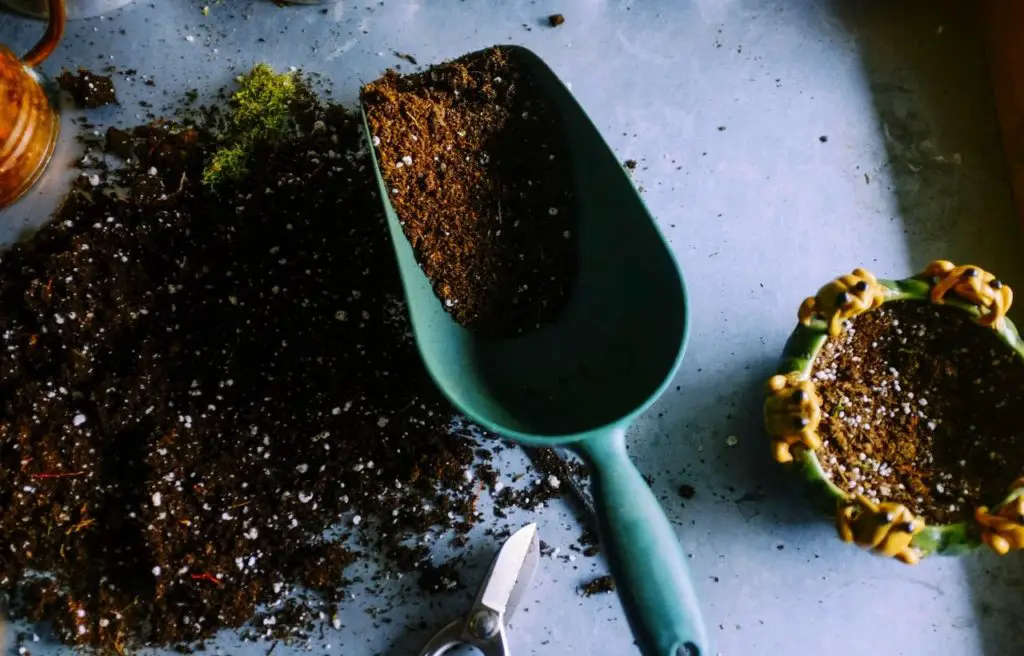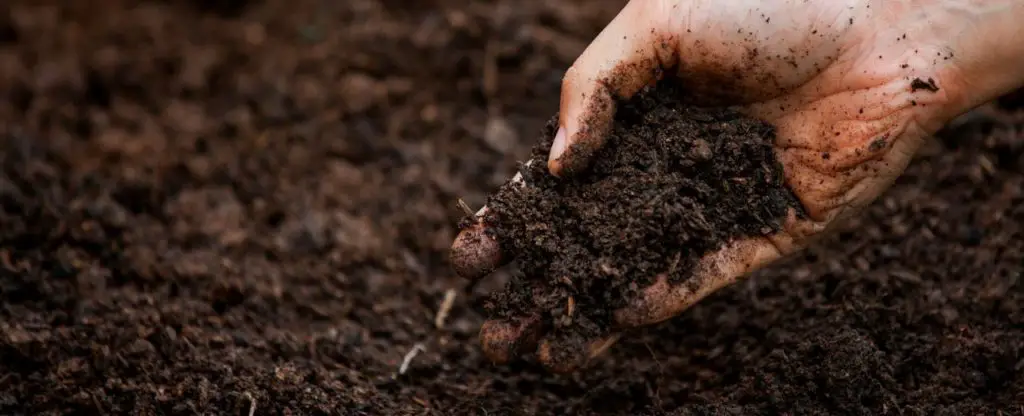As I mention in so many of my other articles, you cannot use garden soil to grow in pots. Why Not? The answer to this question is very simple and straight forward. The soil of the garden is way heavy, has less amount of nutrients, has low drainage and may contain some kind of diseases and weed seeds.
All of these problems can be solved by using potting soil in your containers, grow bags, pots and hanging baskets. You can buy potting soil from the market, nursery or online stores and it is not very expensive if you buy in bulk.
If you are on a budget or cannot buy potting soil for some reason (like me), this article is for you. I will share simple recipes of potting soil with you. After reading this whole article, you will be able to make your own potting soil like commercial potting soil.
What Are The Benefits Of Using Potting Soil?

Here are a few advantages of using potting soil in your container garden over garden soil.
- Potting soil is very lightweight, so it is easy for roots to grow in it. Plus you can easily change the location of your pot because of its lightweight.
- The drainage in potting soil is great. Drainage is a very important factor for the optimal growth of your plants.
- Potting soil contains a good amount of nutrients in it. These nutrients can be enough for weeks for heavy feeder plants. For other plants, nutrients can last for months.
- If you choose the ingredients of soil with little care, there will no disease, fungal infections or weed problems.
- Potting soil can also retain water for a longer period of time. This property is great for water-loving plants.
- You can use potting soil to grow vegetables, herbs, salad greens, ornamental plants, cactus and bonsai trees.
- By making a little difference in ingredients, you can also use potting soil to start growing seeds and cuttings.
Simple Method To Make Cheap Potting Soil

Before reading the method to make potting soil, you have to understand the work of all ingredients.
1: Perlite.
Perlite is great to increase the pore space and drainage of the potting soil. The pH of the perlite is neutral.
2: Vermiculite.
Like perlite, vermiculite is also used to increase the porosity of the soil. It has calcium and magnesium, which is an addition of nutrients in the soil. Vermiculate increases the water holding capacity of the soil.
3: Compost.
We all know the benefits of good compost or manure. Both of these containers thousands of microbes to better growth. Compost has great water holding capacity. If you are using homemade compost, make sure it is fully decomposed.
If you are living in a village area like me, you can have dung manure in no time. Just remember, only use fully decomposed manure.
Also Read: How To Make Compost At Home Using Kitchen And Garden Wastes
4: Peat Moss or Coir Fiber.
Both of these ingredients are very lightweight, contain a good amount of nutrients and have great water holding capacity. Both of these take a long time to breakdown.
Peat moss is very cheap as compare to coir fiber because coir fiber has more nutrients and lasts longer than peat moss. Coir fiber is a by-product of the coconut industry and it comes in compressed bricks.
The pH of peat moss is higher (basic) then coir fiber, whereas coir fiber is neutral in pH.
5: Sand.
Do not use normal sand, use coarse builder’s sand is used to increase the drainage of the soil. Some people suggest that sand is a great alternative to perlite.
I did try sand instead of perlite and it works great. But it cannot be used instead of vermiculite, because sand does not have calcium and magnesium.
For cactus, you may have to add extra sand or perlite (or both) to increase the drainage of the soil.
6: Lime or Soil Sulfur.
These ingredients are great to increase or decrease the pH of the soil. Lime can increase the pH of the soil and soil sulfur can decrease it.
Some of the plants love acidic pH like strawberries. Some like basic pH lettuce and sage. So add lime of soil sulfur according to the pH need of your plants.
7: Fertilizer.
Some plants are very heavy feeders, they will need extra nutrients after a few weeks. If you are using peat moss, you will need to fertilize your plants a little early. But if you are using coir fiber, your heavy feeders will need extra nutrients but after a few weeks.
You can use granular fertilizer during the process of making soil or you can use liquid fertilizer after weeks.
Also Read: How To Grow Purple Potatoes In Containers
Simple Recipe To Make Basic Potting soil
- 1 part compost or fully decomposed manure
- 1 part of perlite or vermiculite
- Or use half perlite and half vermiculite to make 1 part
- 1 part of peat moss or coir fiber
- A cup of lime to keep the pH of soil neutral (if you are using peat moss)
Potting Soil For Cactus and Succulents
- 2 part peat moss or coir fiber
- 1 part perlite
- 1 part vermiculite
- 2 part coarse sand
- 2 TBPS lime (if you are using peat moss)
Potting Soil For Seed Starter
- 2 Part peat moss or coir fiber
- 2 part vermiculite
- 1 part coarse sand
- 3 TBSP lime (if you are using peat moss)
Potting Soil For Transplanting Seedlings
- 2 part peat moss or coir fiber
- 2 part vermiculite
- 1 part compost
- 3 TBSP lime (if you are using peat moss)
- 2 TBSP Organic fertilizer (granular)
Potting Soil For House Plants
- 2 part peat moss or coir fiber
- 1.5 part of perlite
- 3 TBSP lime (if you are using peat moss)
- 2 Organic fertilizer (granular)
- 2 TBSP Organic fertilizer (granular)
Instructions:
After adding all the ingredients according to your need, mix them well. Use them immediately after making the recipe. But if you want to store your soil, fill a plastic bag, seal it and place it in a cool and dry place.
Also Read:
Sources:
- https://www.almanac.com/news/gardening-news/make-your-own-potting-soil
- https://www.hobbyfarms.com/10-ingredients-to-make-your-own-potting-soil-5/
- https://savvygardening.com/diy-potting-soil/
